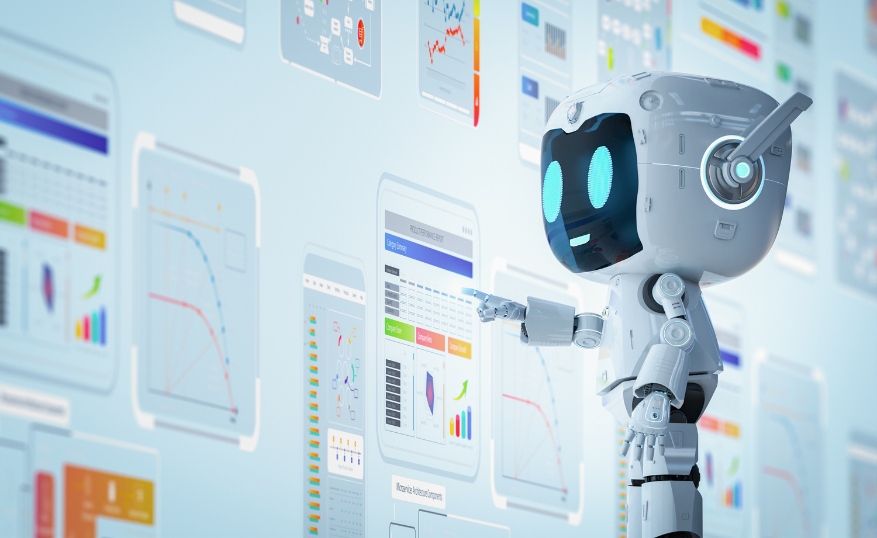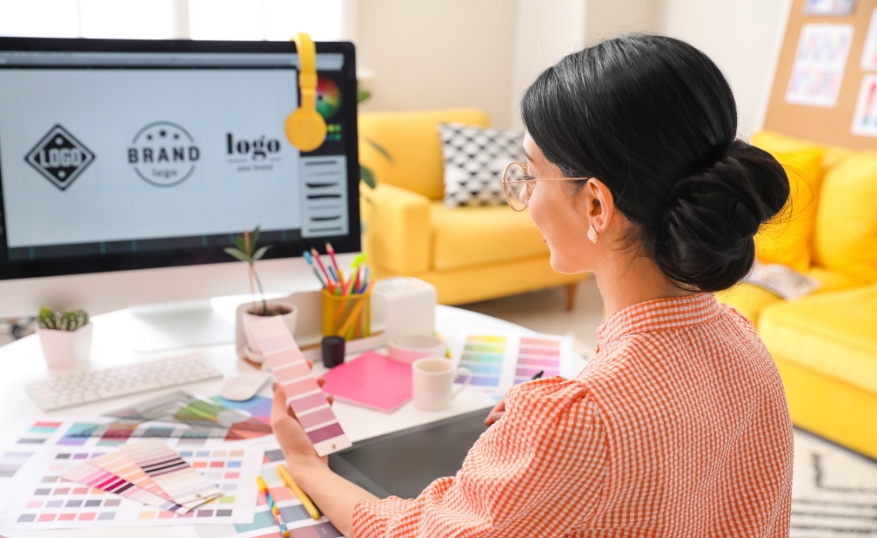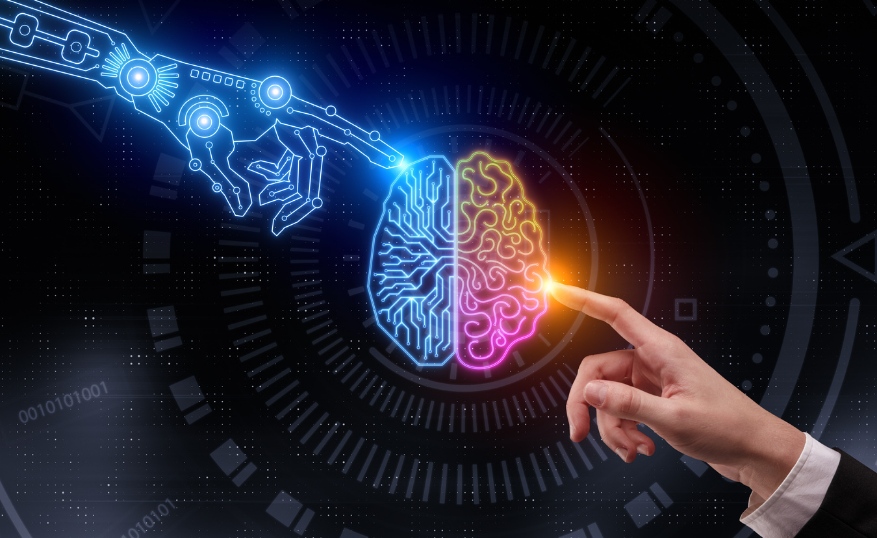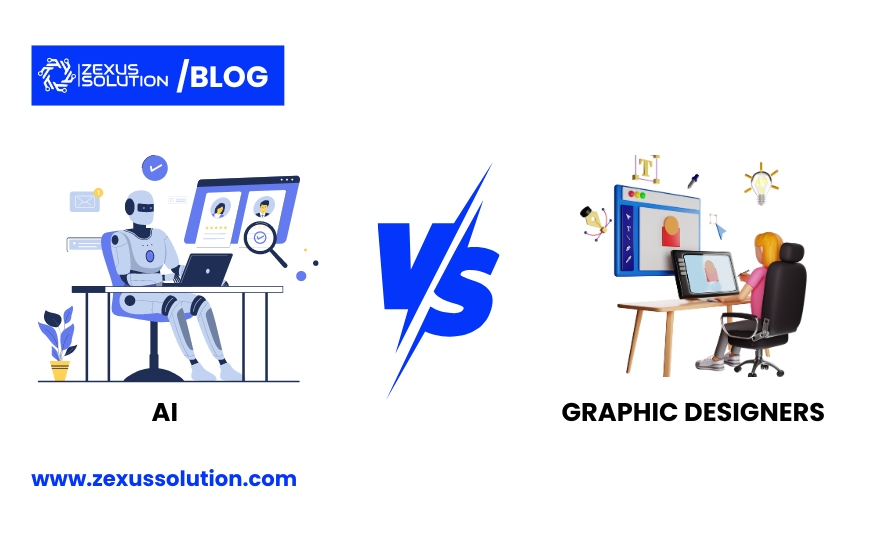Table of Contents
AI vs Graphic Designers, you all must have heard about this battle going on these days. In recent years, the world has seen a brilliant rise in Artificial intelligence (AI). As AI continuously evolves, its application in visual arts opens new opportunities for designers, making overall workflow easy and improving creativity.
Many businesses and companies from all over the world are constantly looking for the best designs. Designs that deliver the brand messages to their target audience. Design that helps them to connect with their customer globally. The real question comes in, how to do that? Working with designers is one of the most clear options. Creative design services have become popular in recent years.
The question arises: AI vs graphic designers – who will win the battle of creativity? This blog delves into this topic, exploring AI’s and human designers’ strengths and limitations, and what the future may hold for custom graphic design services.
The Rise of AI in Graphic Design

AI technology has made a good entry into our lives in recent years, offering tools that can help create brand logos. Layouts, and even the whole website. AI-driven platforms such as Adobe Sensei, Canva, and Tailor Brands use machine learning algorithms to analyze trends, design principles, and user preferences to create design options quickly and efficiently.
Advantages of AI in Graphic Design
Speed and Efficiency:
AI can process vast amounts of data and generate design options in a fraction of the time it would take a human designer. This efficiency is particularly beneficial for businesses that require rapid turnaround times for their projects.
Cost-Effectiveness:
Utilizing AI for design tasks can be more cost-effective than hiring a human designer, especially for small businesses and startups. This makes custom graphic design accessible to a wider audience.
Consistency:
AI tools can maintain a high level of consistency across various design elements, ensuring that branding remains uniform across different platforms and materials.
Accessibility:
AI-powered design tools often come with user-friendly interfaces that allow individuals with little to no design experience to create professional-looking graphics. This allows access to graphic design services.
Automated content generation
One of the finest ways AI can impact graphic design is through automated-generated content. AI tools can analyze huge amounts of data, identify patterns, and understand principles related to designs.
By applying specific parameters, you can instruct AI algorithms to create better layouts, compositions, and even the overall design.
Real-time coordination
AI enables real-time collaboration, so you may collaborate without difficulty no matter where you are in the world. Collaboration solutions driven by AI have the potential to improve teamwork, simplify processes, and improve communication.
Improved teamwork increases productivity and creativity while guaranteeing that the final product represents the team’s collective effort.
Personalization:
By analyzing user data and preferences, AI enables designers to produce designs that are specifically tailored to target audiences, increasing consumer happiness and engagement. It is, after all, crucial to capture the audience’s attention!
The Human Touch: Graphic Designers’ Edge

Despite the wonders of AI, human graphic designers bring unique strengths to the table that AI cannot do. The debate of AI vs graphic designers often highlights the irreplaceable human touch in creativity.
Advantages of Human Graphic Designers
Creativity and Innovation:
Human designers possess the ability to think creatively and innovatively, coming up with unique concepts and ideas that AI may not be able to generate. This creative spark is essential for producing original and captivating designs.
Emotional Connection:
Graphic designers can infuse their work with emotion and storytelling, creating designs that resonate with audiences on a deeper level. This emotional connection is a crucial element of effective branding.
Adaptability:
Human designers can adapt to feedback and make nuanced changes to their work based on client preferences and market trends. This flexibility allows for a more personalized approach to design.
Understanding Context:
Designers can understand and interpret cultural and contextual issues, ensuring that designs are appropriate and sensitive to the target audience. This level of understanding is something AI struggles to achieve.
AI vs Graphic Designers: Case Studies and Examples

To better understand the AI vs graphic designers debate, let’s examine some case studies and real-world examples where both AI and human designers have made significant contributions to the field.
Case Study 1: Logo Design by AI
Tailor Brands, an AI-driven logo design platform, allows users to create logos quickly by inputting their business name and industry. The AI generates multiple logo options based on design principles and current trends.
While this approach is efficient and cost-effective, the logos tend to lack the unique touch that a human designer might bring.
Case Study 2: Human-Centric Branding Campaign
Coca-Cola’s “Share a Coke” campaign is a prime example of the power of human creativity. This campaign involved replacing the Coca-Cola logo on bottles with popular names, encouraging consumers to find bottles with their names or the names of loved ones.
The campaign’s success lay in its ability to create a personal and emotional connection with consumers, something that AI alone could not achieve.
The Future of Graphic Design: Collaboration Over Competition

Rather than viewing AI vs graphic designers as a battle, it is more productive to consider how AI and human designers can collaborate to enhance the field of graphic design services in the USA.
The integration of AI into the design process can complement the skills of human designers, leading to more efficient and innovative outcomes.
Collaborative Approaches
AI-Assisted Design:
Graphic designers can use AI tools to streamline certain aspects of their work, such as generating initial design concepts, selecting color palettes, or automating repetitive tasks. This allows designers to focus on the more creative and strategic aspects of their projects.
Enhanced Creativity:
AI can serve as a source of inspiration for designers, offering new ideas and possibilities that they might not have considered. This can lead to more diverse and innovative designs.
Data-Driven Insights:
AI can analyze data on consumer preferences and market trends, providing designers with valuable insights that inform their creative decisions. This data-driven approach can result in designs that are more likely to resonate with target audiences.
Conclusion
In the battle of AI vs graphic designers, there is no clear winner. Both have their strengths and limitations, and the future of graphic design lies in their collaboration rather than in competition. AI offers speed, efficiency, and accessibility, making graphic design more attainable. On the other hand, human designers bring uniqueness, creativity, and emotional depth that AI cannot do.
As AI technology continues to evolve, it will undoubtedly play an increasingly important role in the field of graphic design services. However, the irreplaceable human touch will always be a critical component of effective and impactful design.
Whether you are looking for graphic designing services or anywhere else, the combination of AI and human expertise can provide you with the best of both worlds. The future of 2D and 3D animation services, branding, and custom graphic design will likely be shaped by this collaborative approach, leading to even more exciting and dynamic creative possibilities.



Add a Comment